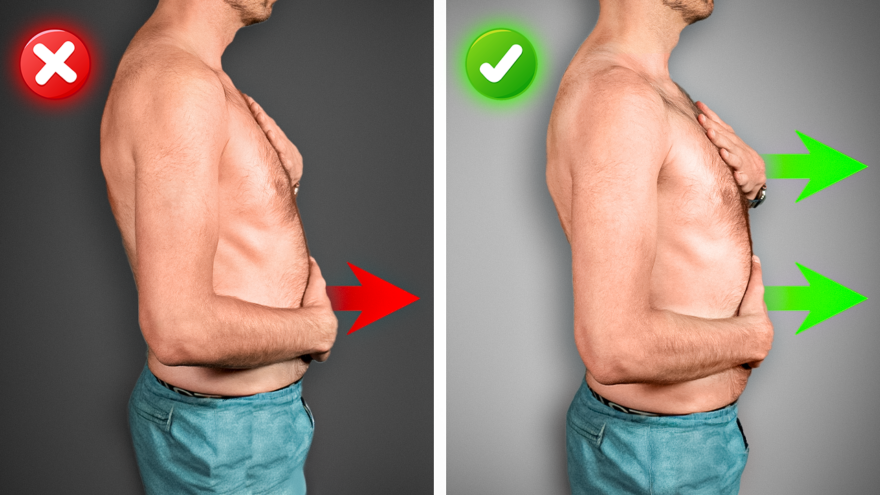Table of Contents
The BEST Way to Breathe
Breathing correctly is essential for maintaining optimal health, yet we kinda stink at it. If you mouth breathe or rely heavily on neck and shoulders, I’m talking to you.
So should we belly breathe instead? It’s a common fix.
But there’s a problem.
It actually restricts breathing mechanics.
Let’s explore what you should do instead. To breathe in a way that helps your body move better.
Understanding Proper Breathing Mechanics
Proper breathing isn’t just about filling your lungs or belly.
You must expand the chest and stomach together! This maximizes mobility and ensures efficient oxygen exchange.
Here’s what you need to keep in mind:
- Relax Your Neck: A relaxed neck keeps teh airway open. More air can enter without strain.
- Expand Your Ribs and Chest: With belly breathing, the chest doesn’t move. How are the lungs supposed to fill? Let the chest move!
- Allow Stomach Movement: The stomach should expand in all directions. This ought to happen at the same pace as the chest.
Step-by-Step Breathing Technique to Enhance Lung Capacity
Here’s a simple sequence to practice this breathing. It’ll not only improve lung capacity, but will reduce body tension. The best part? You can do this anywhere!

Step 1: Prepare Your Breathing Position
- Lie on your back in a comfortable spot.
- Place one hand on your chest and the other on your stomach.
- Place your tongue against the roof of your mouth, just behind your teeth.
- Gently close your lips.
Step 2: Inhale Slowly
- Take a silent nasal breath. Breathe for 5 to 10 seconds. The slower the inhale, the better the lung fill and the lesser the neck tension.
- Ensure both your chest and stomach expand as you breathe in. But don’t force it.
Step 3: Exhale Slowly
- Exhale gently through your nose for about 5-10 seconds.
Practice this for 2 to 3 minutes and observe how both the chest and stomach rise and fall together.
Advanced Breathing: Mastering the Exhale
A proper exhale is as critical as the inhale. Here’s how to perfect it:
- After your slow inhale, open your mouth and exhale for 4 to 8 seconds as if you’re fogging up a mirror. Your ribs will move a bit more with this style, and that’s a good thing!
- If your chest collapses and you start looking like a hunchback, slow the pace. That exhale should be snail pace.
Elevate Your Breathing with a Controlled Pause
To take your breathing practice to the next level, introduce a controlled pause:
- After a complete exhale, pause and hold your breath until you feel the initial urge to breathe.
- Follow this with a slow, silent inhale over 5 to 10 seconds. Don’t force it or make it fast!
This technique builds your carbon dioxide tolerance. Better tolerance of this improves:
- High-intensity exercise performance
- Voice issues
- Ear/eustachian tube problems
- Asthma
Conclusion
Improving your breathing technique can give you MASSIVE health benefits.
If you practice the above steps, you’ll breathe better and live better.

